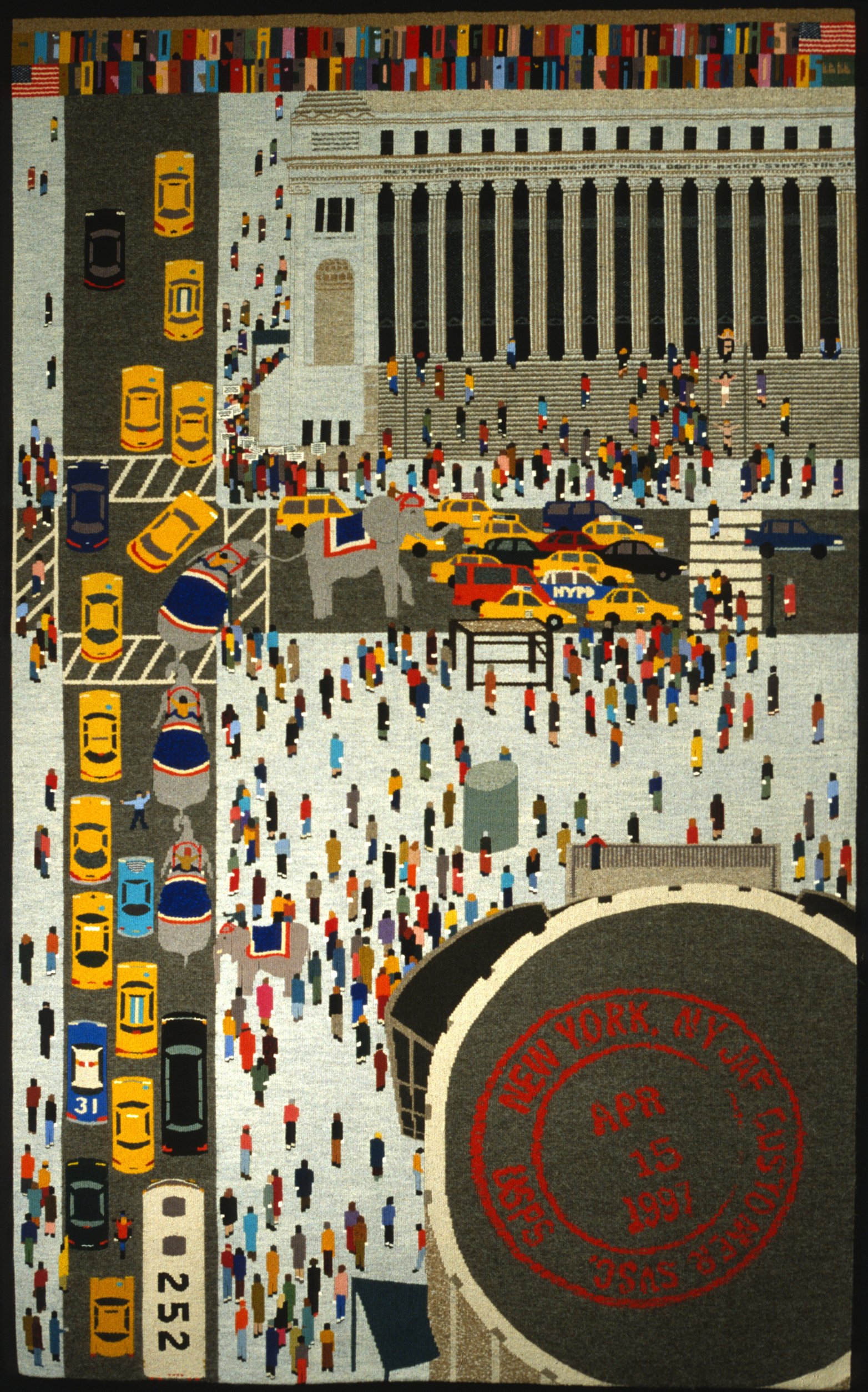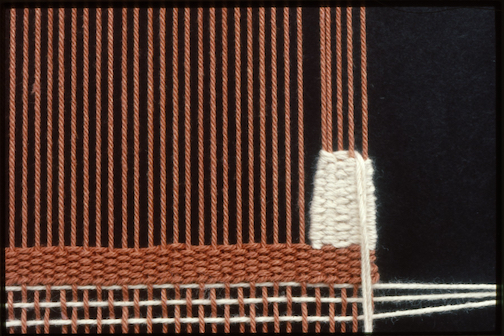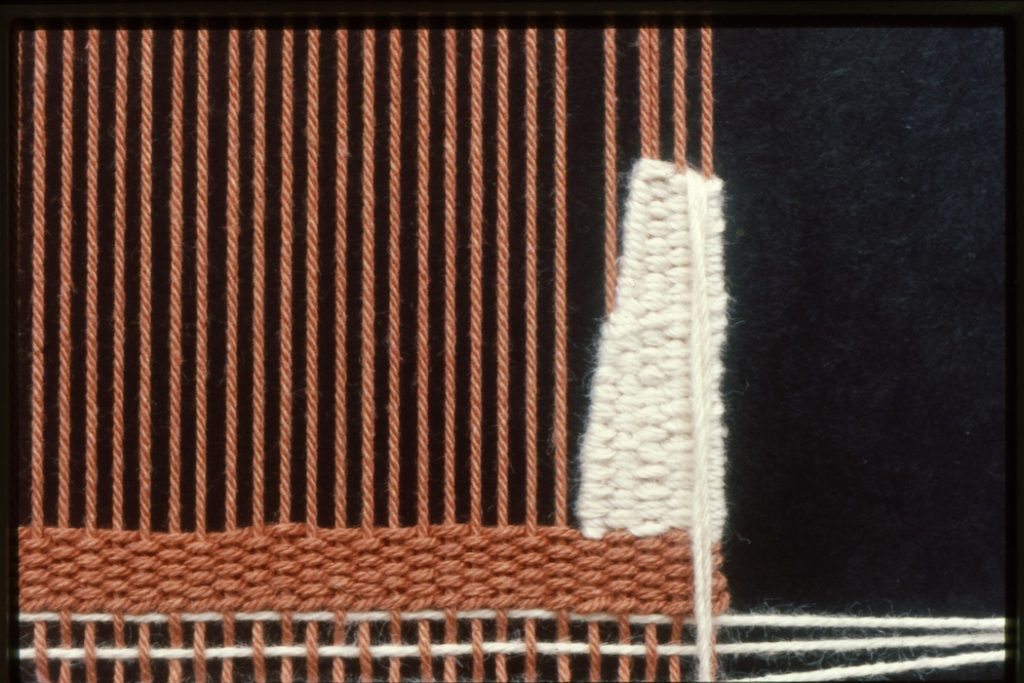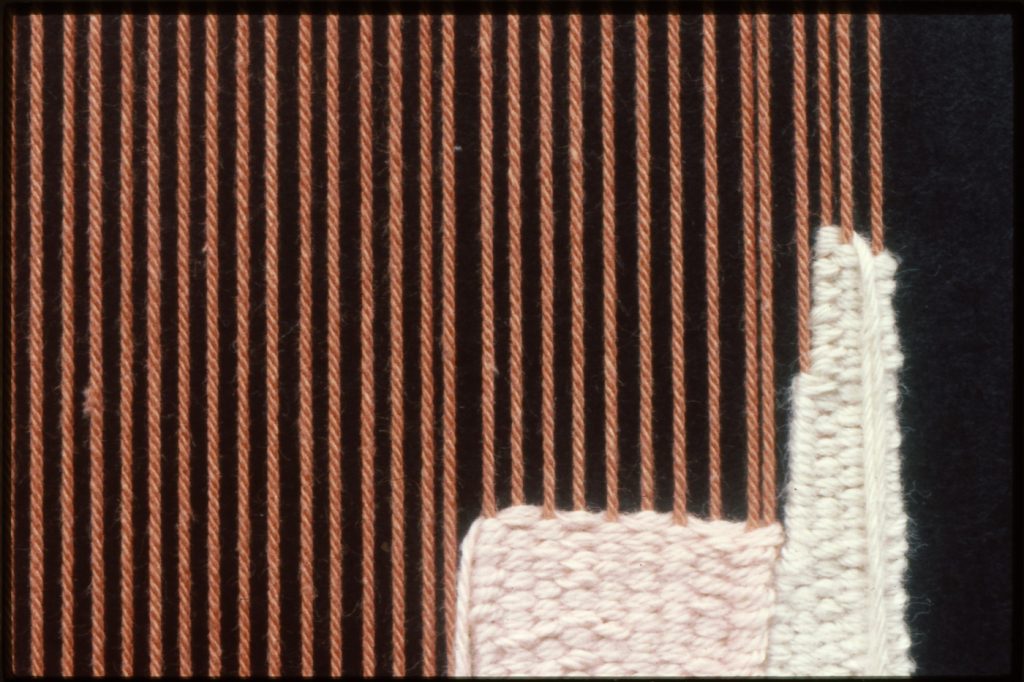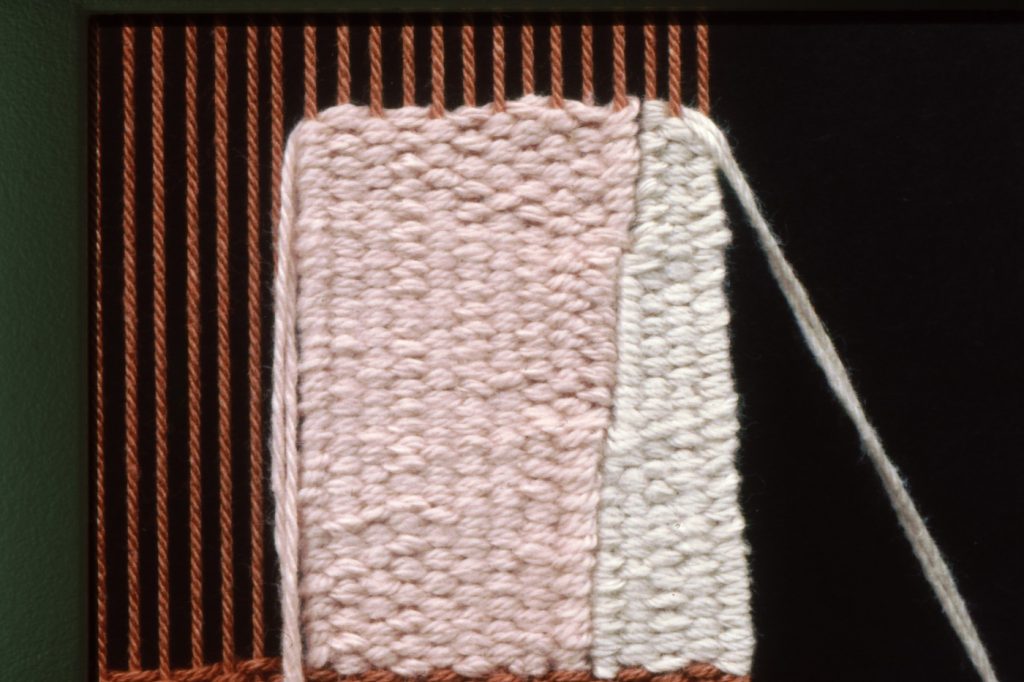Tapestry weavers spend many of their beginning years acquiring the skills that enable them to take their images successfully from the mind’s eye to the loom. Many of the weaving techniques become almost automatic. Others can be filed away and used under special circumstances. Weaving small tapestries can shift the focus onto the development of these more specific skills. In small work every pass and pick can be refined and stretched to gain the ultimate in expression. Slits are only one example of these refinements.
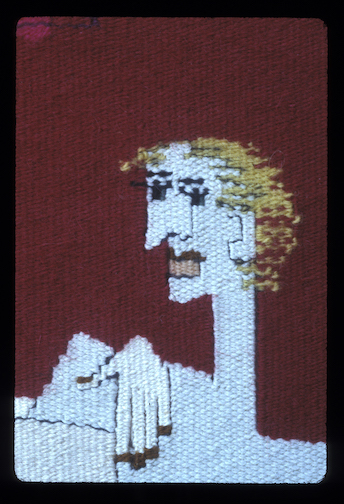
Flemish tapestry weaving of faces and hands in the fifteenth century used slits to define subtle areas of contour around features like eyes, lids and eyebrows and to create wrinkles and knuckles. In a similar way slits can be used as fine lines to define the drawing of a form. In “The Pink Hotel” slits are used to define the fingers of the hand.
“The Pink Hotel,” detail.
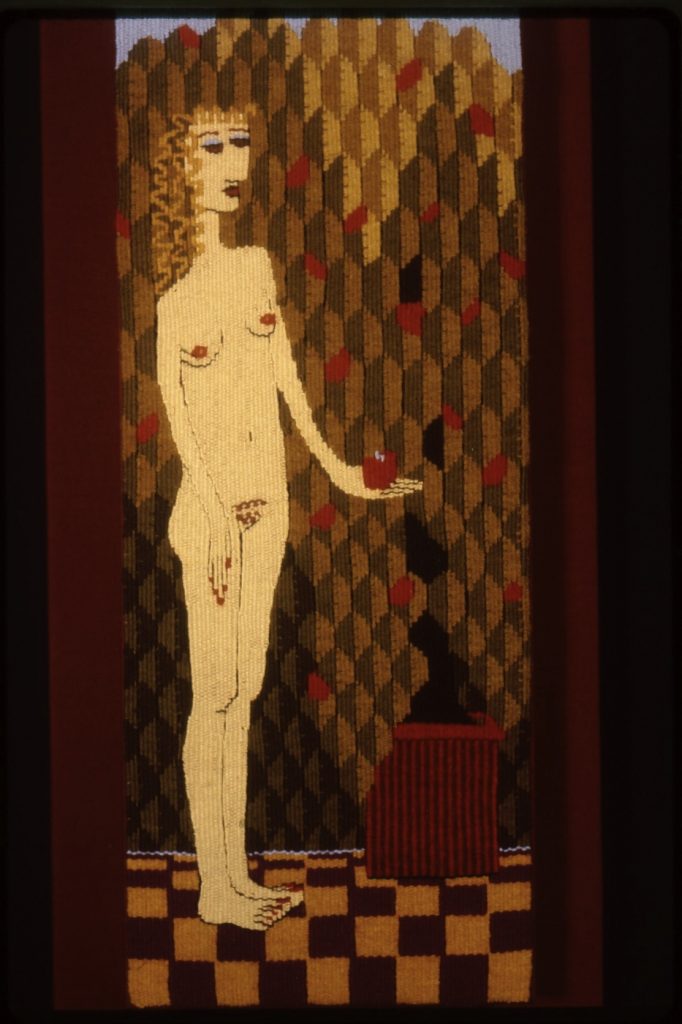
Slits can be used to create fine steep or vertical lines. When a pick of darker thread is put on top of each step as a steep angle is built, the eye will read slit and pick as a part of the same stepped line. “Eve” illustrates one example of using this technique to divide the arm from the body.
“Eve,” 19.5″ x 7.5.”
Slits can also be manipulated and shaped like the “bad” edges of a beginner’s tapestry. This technique creates subtle curves and angles in areas where stepping over to the next warp would result in a square step rather than a graceful curve. This is especially crucial on a miniature piece, where the viewer is naturally drawn to every minute detail of the work.
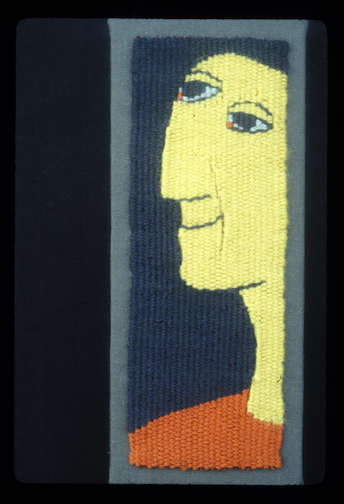
Control of this valuable technique in order to maintain a good surface depends upon one’s ability to change the warp sett (spacing) gradually in a section and then change it back again. Therefore, it is most successful over longer vertical angles. Figure 3 shows how this technique can be used to create a curved shape. Look carefully at the nose and neck areas.
“Profile in Yellow,” 6″ x 2.5.”
Pushing the limit of shaped slits to the extreme presents a new way of weaving a very steep angle without the usual visible steps. This experimental method works best over long vertical shapes. Harder spun wefts are easier to control than soft ones. There is also an advantage, from the beginning, in having the space between the warps slightly wider than the warps themselves; having more space will make bending and manipulation easier. Because the process is quite simple and logical, it requires only practice to understand and acquire control.
Adding refined techniques such as these to the basic repertoire of shape building techniques can enhance any tapestry weaver’s work. The use of these methods allows ideas to be explored and expressed more fully within the confines of traditional tapestry weaving.
How to create shaped slits
(right) Repeat the process again for as many steps as needed.
(right) Repeat until the area is totally filled in.
